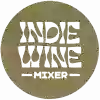The Great Recession
By Dean Sandifer
Most economists have now agreed that we are experiencing the worst recession since the Great Depression - that's over 80 years ago - and economists have coined the term "Great Recession" to express this viewpoint.
Economic measurements - e.g., number of people out of work, length of time before finding work again, number of discouraged workers who have left the labor force, the decline in the value of corporate and personal assets, etc. - all indicate the severe nature of this economic downturn when compared to past recessions.
About four months ago, I heard a radio interview with a local financial advisor talking about this recession. He said that we are experiencing a "financial recession" (unlike most past recessions), and that the only roadmap we have to go by is the Great Depression, which took almost 10 years to recover from. His estimate - using the Great Depression as a guide - was at least three, maybe five, more years before this recession is over.
Generally, Oregon wineries are experiencing a decline in demand for their products. This is especially true for higher priced wines and especially true for Pinot Noir (normally the highest-priced wine in a winery's portfolio). Consumers are no longer willing to purchase expensive Pinot Noir (i.e., wine priced over $20 per bottle retail).
This is also the message my out-of-state distributors and retailers tell me - by word and by deed. I last visited my Washington distributor about six months ago. One Seattle retailer I visited - who loves Oregon Pinot Noir - took me over to his Oregon Pinot selection and told me that the wines priced over $20 per bottle have not moved in the last four months; and there were lots of bottles to choose from.
Small wineries like mine, Domaine Coteau, that produce only Pinot Noir and solely feature wines for more than $20 per bottle, have been caught by this recession and are slowly dying.
Unless one has very deep pockets and is willing to lose money for the next three to five years, wineries like mine, and many others, cannot maintain in light of this new reality.
The reduction in demand for higher priced wines presents a difficult barrier to overcome for wineries. Wineries have already invested in their wines in terms of grapes, barrels, corks, labels, bottles, etc. Termed "sunk costs," these expenses are only recovered through sales.
But as sales are painfully slow, there's a slow cost recovery and slow inventory reduction, which creates a great burden on the financial structure (e.g., cash on hand, operating ratios, etc.) of the winery.
In order to stay afloat, wineries are pressured to lower prices in order to increase demand. In fact, some wineries have established "second" and even "third" labels. These labels normally carry a retail price of $20 or less and may contain the same wine previously sold at $30, $40 or $50 per bottle.
Though this strategy loses money, it protects the winery's major brand in terms of image and price while providing cash flow. Plus, it buys some time for the market to recover.
But establishing a secondary label takes time and money. Also, the winery must commit to making the new label for a good length of time because distributors want brands with longevity due to their own investment of time and money in a label's success. This strategy also loses money for the winery, as most Oregon wineries cannot turn a profit when their Pinot Noir sells for $20 per bottle retail.
While it does buy time, it also creates a major problem: consumers create a habit of buying low-priced wine.
If this were to happen, there is a real fear that the market for Oregon Pinot Noir may never fully recover. Long financial recessions tend to create a permanent shift in the way people think and act - note the Great Depression and its influence on your parents' and grandparents' economic behavior.
For those wineries that survive this new mindset, grape and vineyard prices will need to decline to meet this shift in attitudes and buying habits.
With over eight million people out of work, it's easy to see that the high-end wine market will be slow to recover. People need extra money in their pocket to purchase wine - especially Pinot Noir, and this is the only way Oregon Pinot will regain its price point in the marketplace.
Many economists are predicting that it will take at least five years to bring the unemployment rate back down to 5.5 percent. Can Oregon wineries hold out that long?
Only time will tell.
Dean Sandifer is the owner of Domaine Coteau, a high-end Pinot Noir winery located in Carlton.












